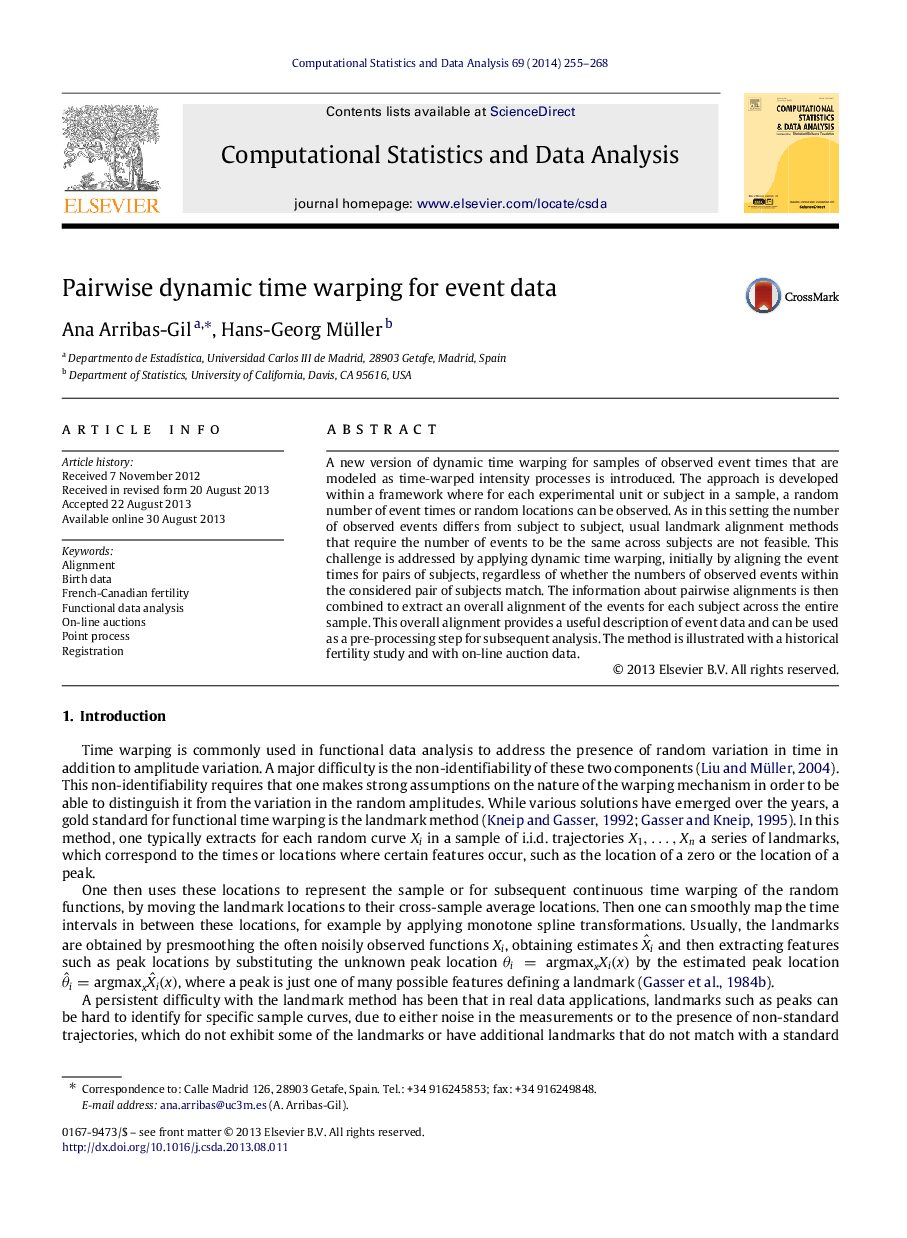| Article ID | Journal | Published Year | Pages | File Type |
|---|---|---|---|---|
| 414990 | Computational Statistics & Data Analysis | 2014 | 14 Pages |
A new version of dynamic time warping for samples of observed event times that are modeled as time-warped intensity processes is introduced. The approach is developed within a framework where for each experimental unit or subject in a sample, a random number of event times or random locations can be observed. As in this setting the number of observed events differs from subject to subject, usual landmark alignment methods that require the number of events to be the same across subjects are not feasible. This challenge is addressed by applying dynamic time warping, initially by aligning the event times for pairs of subjects, regardless of whether the numbers of observed events within the considered pair of subjects match. The information about pairwise alignments is then combined to extract an overall alignment of the events for each subject across the entire sample. This overall alignment provides a useful description of event data and can be used as a pre-processing step for subsequent analysis. The method is illustrated with a historical fertility study and with on-line auction data.
